Below are nine basic positions of stalemate lines for Northern alliances, particularly those spearheaded by England. It is crucial that all players recognize the stalemate for what it is: A last-ditch defensive position, to be moved into only when all possible expansion is blocked, and contraction is imminent. As such, it approaches a criminality to move into these positions at any time before the late midgame, or endgame. Such actions indicate a lack of confidence, an unsureness of oneself, and alliance with a player who considers himself a bad one is advisable only when the ally who is well known as a good player. One can never win a game by moving into defensive positions.
On the other hand, it is equally stupid to move into positions that cannot be held.
The best strategy is probably the middle course: to realize that,
although any offensive move entails risk, that risk is necessary.
If there was no risk, what fun would Diplomacy be?
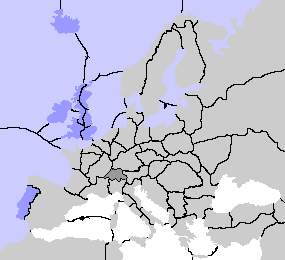
The center of any Northern Stalemate is England. This is understandable when one realizes that all stalemate positions (with the exception of the one described in my letter in Graustark #262) slant across the board. Thus, for the Northern Alliance to be able to move into stalemate, it either needs England as a partner, or it must capture it by the early mid-game.
It is necessary to note that this is a truly last ditch effort,
and can only succeed if Germany, France, and Russia are unable
to attack by sea, and of course the countries of Austria-Hungary,
Italy and Turkey are bottled up in the Mediterranean.
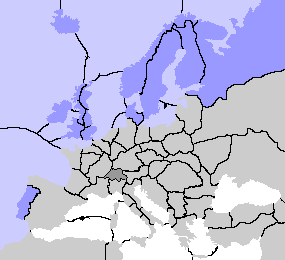
This is the basic stalemate position mentioned by Beshera. Although a foreign fleet in the Northern waters usually ruins the stalemate, if there are two extra supply centers (as in this case) two special cases exist. One is an enemy fleet in Bothnia, Sweden, or in the Baltic. The extra units are an army in Sweden supporting Denmark and a fleet in Bothnia, Finland, or Barents supporting St. Petersburg. The other special case is a fleet in Barents, countered by a fleet holding in the Norwegian Sea and one in Finland supporting St. Petersburg.
((In a letter in Graustark #272, Bob noted that "the variation
in position II will only work if the enemy is in either Fin or
Bar. The Bot position can crack the stalemate." Mark Berch,
Diplomacy Digest 10--11 (April-May 1978).))
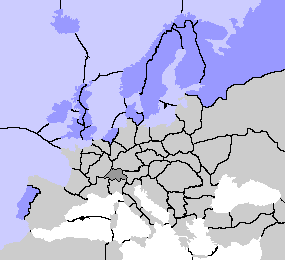
This position does not permit the variation of II, but there are
two variations here: one is an army in Belgium, supported by F
Nth & F Eng; another is A Kie supported from Denmark, Helgoland,
and the Baltic.
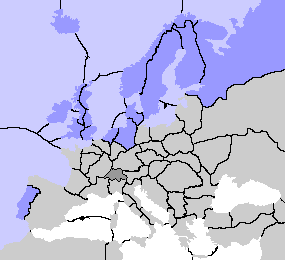
This position can be moved into from the main possibility of III,
or the Kiel variation, but not the Belgian one.
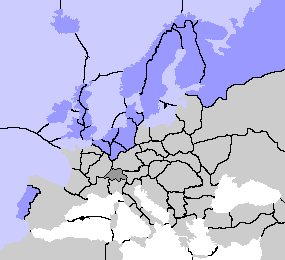
At this point I am afraid that the variations become too numerous
to mention. Therefore, I will only mention major ones when they
are possible.
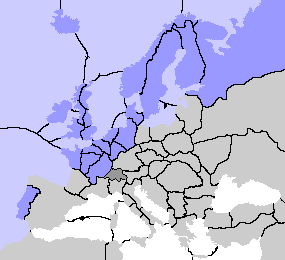
There are two variations that are potentially important. (1) Instead
of an army in Picardy, an army in Gascony, supported from Brest,
paves the way for a land link-up of the Southern and Northern
continents. (2) Instead of F Nwy, an army in Livonia, supported
from St. Petersburg, and a F Bot or F Bal helps increase the safety
of St. Petersburg in the event of a missed move.
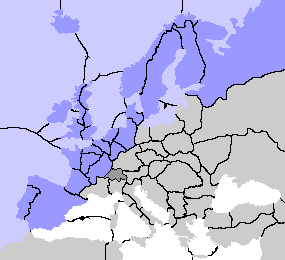
This is a position that, with the St. Petersburg variation, has
only one weak spot: the Mid-Atlantic. If an army is placed in
Denmark, then any missed move will not be crucial, except in the
Mid-Atlantic.
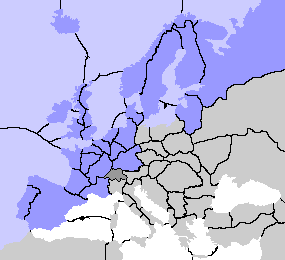
This position is the one preceding link-up of all forces. Such
a link-up is preferable, because it shortens the lines.
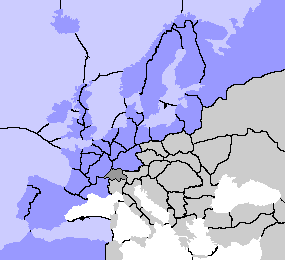
This is a stalemate position that can stand up to a missed move. All the crucial minimal stalemate points are either completely behind the lines, or exposed to only one enemy unit.
The next progression yields not a stalemate, but a win for the
single player. Thereafter, the South is on the defensive.... I
wish to assure everyone that all the research into stalemates
that appear in this article was done by the author. The Beshera article
was not used in the writing.